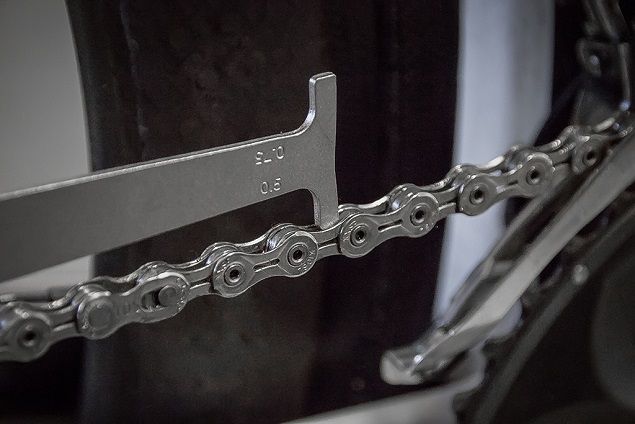Yes, it look like a simple question, but you know the internet, google a simple question and you get so many random answers its hard to tell what is relevant.
As a chain wears, the pins and plate holes wear, increasing the spacing between rollers. This concentrates load on the top gear tooth, rather than distributing it over all of the teeth around which the chain is wrapped. Over time, the gear teeth will become hook-shaped and the tooth valleys will lengthen. A new chain will skip and jump when running on worn cogs and vice versa.
It’s commonly argued that if you replace your chain before it starts to wear too badly it will dramatically increase the life of the rest of your drivetrain. A $50 new chain every few months could save you hundreds by preserving your drivetrain. Even when cost isn’t a factor, the likes of the top WorldTour teams regularly replace chains approximately every 1,000km.
Using a ruler, a new chain should measure exactly 12 inches across 12 links, from middle of pin to middle of pin. The number most commonly agreed on for a worn chain is one percent elongation between links. In reality though, you want to replace the chain before this point.
The most accurate way to inspect for wear is to use a ‘chain checker’ tool.
However, it’s possible to check chain wear without buying a ‘chain checker’ tool. One method is to lift the chain from a section of the chainring. Lifting a worn chain will expose over three or four teeth.
Another method of checking chain wear without using a tool involves removing the chain from the bike, laying it on the ground, and attempting to unite the two ends. While all chains have some lateral movement, allowing them to work in a derailleur system, an excessively worn chain will exhibit a great deal of sideways flex.















You might be more precise.
Industrial standard elongation indicated for chain replacement, in the case of derailleur based drive train, is 1%. At this wearing, there is certainly wearing of the cogset but not on the chain ring.
For single speed drive trains, the elongation for chain replacement is 2%.
In order to preserve the cogset, you should not exceed 0.75% elongation of the chain.
The best way to measure the elongation of the chain is to measure it on 100 links (20 inch or 127 cm). Of course you should use a quick release chain link.
The other methods are highly prone to measurement errors.